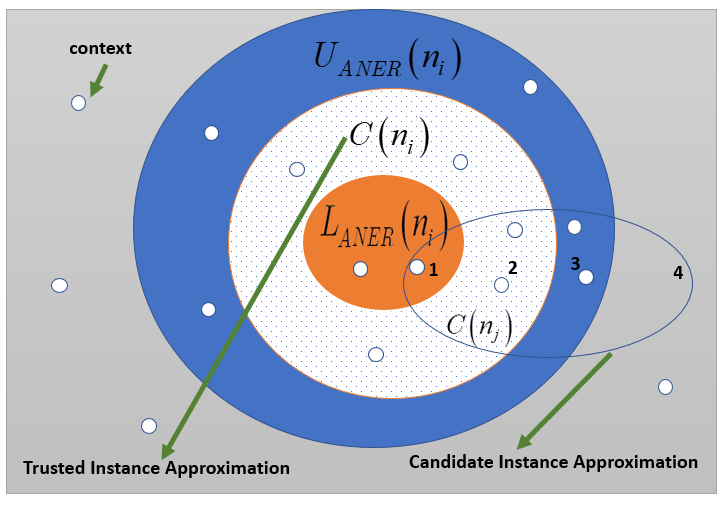
UW Merit Award for Exceptional Performance: 2022,2021,2018, 2017, 2010, 2009, 2008, 2003 and 1999
Elected Senior Member IRSS: 2016
Featured on NSERC media release, May 24 2003 for my research on Software Quality
Best paper Award at the AIRTC’98 Conference in Arizona, October 1998
Researcher of the Year, College Award, Idaho State University, 1994
Organizing Co-Chair ISCMI 2022
Toronto, Canada
Program Co-Chair IJCRS 2021
IFSA-EUSFLAT2021, Bratislava, Slovakia
Conference Co-Chair MIWAI 2013
MIWAI 2013, Krabi Thailand
Program Co-Chair RSKT2011
The Fifth International Conference on Rough Sets and Knowledge Technology
Banff, October 9-12, 2011
Program Co-Chair RSCTC2010
Seventh International Conference on Rough Sets and Current Trends in Computing
Warsaw, June 28-30, 2010
Workshop Chair A12011
Canadian Conference of Artificial Intelligence
Saint John's NewFoundland and Labrador, May 27-29, 2011
My research is in fundamental and applied research in Machine Learning
with Computational Intelligence (CI) techniques.
CI methods are ideal for solving complex learning and decision-making problems under conditions of uncertainty.
My research has been funded by NSERC Discovery Grant, NSERC Alliance Grant, NSERC Engage
Grants and
MITACS Accelerate grants. The following areas represent my research interests.
 Fig : Ack: Semi-Supervised Learning (TPL and FRL algorithms),
MSc Thesis: Cenker Sengoz, Aditya Bharadwaj and Hoora Moghaddam.
Fig : Ack: Semi-Supervised Learning (TPL and FRL algorithms),
MSc Thesis: Cenker Sengoz, Aditya Bharadwaj and Hoora Moghaddam.
Named Entity Recognition (NER): The aim of this research is to demonstrate that tolerance-based approximation structures (with rough sets and fuzzy rough sets) integrate conceptual structures at different levels of granularity thereby facilitating learning in the NER domain. We have developed novel tolerance-based rough and fuzzy-rough hybrid models to represent linguitics entities from web corpora and implemented semi-supervised machine learning algorithms (TPL and FRL) to label relational facts as well as biomedical entities, (see publications), and MSc Theses under dissertations.
Sentiment Classification: In this research, we recently developed a novel tolerance near-set based supervised machine learning algorithm (TSC) for non-topic classification (see Patel, V. and Ramanna, S), and MSc Thesis.
Content Aggregation and Content User modelling: The aim of this NSERC Engage Grant project was to develop a content recommendation system for the Curatio Health Community (Vancouver, BC).

Computational Topology: We use computational geometry to detect lag threads in fMRI video with geometric Betti numbers. (See publications by A. Don , J.F. Peters, S. Ramanna, A. Tozzi) . Fig : Ack: A. Don , J.F. Peters, S. Ramanna, A. Tozzi, Advances in Computational Neuroscience, Frontiers 2020.
Cubical Homology: In this research, we have developed a cubical homology-based algorithm for extracting topological features from 2D images to generate their topological signatures. (Seung, C and Ramanna, S),
 Fig : Ack: S. Choe and S.Ramanna, Axioms 2022, 11(3), 112, MDPI
Fig : Ack: S. Choe and S.Ramanna, Axioms 2022, 11(3), 112, MDPI
Precipitation Forecasting: The aim of this NSERC Alliance Grant project (with WeatherLogics Inc.) is to examine ensemble machine-learning and deep learning approaches to improve precipitation forecasting for North America as well create specialized datasets and meteorological products. (C. Sengoz, S. Ramanna, S. Kehler, R. Goomer and P. Pries).
Road Classification from images: The aim of this NSERC Engage Grant project (with WeatherLogics Inc.) was to develop a Near Real-time Map with Multi-class Image Set Labeling and Classification of Road Conditions in North America using Convolutional Neural Networks (Ramanna, S and Sengoz, C and Kehler, S and Pham, D).

Land-use and land-cover (LULC) mapping: We report results of LULC mapping from satellite images consisting of Landsat 5/7 multispectral satellite images taken of the Province of Manitoba in Canada using various forms of DCNNs (V. Alhassan and C. Henry and S. Ramanna and C.Storie).
Video segmentation : We introduced an innovative, real-time and fully automated 2D and 3D convolutional neural networks pipeline for video segmentation and myocardial infarction detection in echocardiography (see Hamila O., Ramanna, S. and Henry C. et al.).
1-Dimensional Polynomial Neural Network (1DPNN): A novel 1-Dimensional Polynomial Neural Network (1DPNN) model was introduced, that induces a high degree of non-linearity to produce compact topologies in the context of audio signal applications (H. B. Abdallah, C. J. Henry and S. Ramanna). For a theoretical treatment of the IDPNN model, see (H. B. Abdallah, C. J. Henry and S. Ramanna).
 Fig : Ack:Habib Ben Abdallah. N-Dimensional Polynomial Neural Networks and their Applications MSc Thesis.
Fig : Ack:Habib Ben Abdallah. N-Dimensional Polynomial Neural Networks and their Applications MSc Thesis.
 Fig : Ack: Kardan, V and Ramanna, S. (2018). Int. Joint Conf. on
Rough Sets (IJCRS), LNAI 11103, pp. 73-87, 2018.
Fig : Ack: Kardan, V and Ramanna, S. (2018). Int. Joint Conf. on
Rough Sets (IJCRS), LNAI 11103, pp. 73-87, 2018.
Social Networks: We have developed novel community detection methods based on tolerance near sets and computational geometry-based with Dirichlet tessellation (Voronoi diagrams) and Tolerance rough sets. (see publications by V. Kardan and S.Ramanna, Trivedi, K and S.Ramanna and Jaiswal, R and S.Ramanna).
Audio signals: We have developed supervised learning algorithm based on Tolerance near sets for learning perceptual content in audio signals. (A. S. Ulaganathan and S. Ramanna,Journal of Intelligent Information Systems,2018) .
Rough Sets in Mental health: In this study with EKOSI Health supported by MITACS Accelarate grant, we have identified rough-set based supervised machine learning model with high accuracy that could be utilized for future studies regarding cannabinoids and precision medicine.
Machine Learning of polymer types from the spectral signature of Raman spectroscopy microplastics data: In this study with Compute Connect supported by MITACS Accelarate grant, our aim is to seek to calibrate research tools for certainty in microplastics analysis with machine learning (Ramanna, S. and Morozovskii, D. and Swanson, S. and Bruneau, J.) .
 Fig : Ack: Danila Morozovskii.
Fig : Ack: Danila Morozovskii.